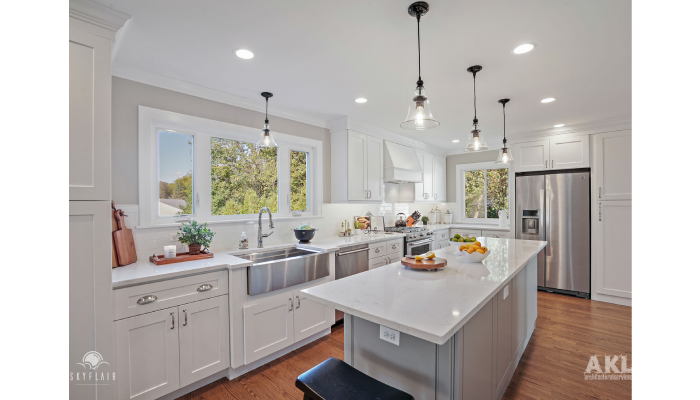When choosing materials for a residential safe room, reinforced concrete and steel are usually the best options. Reinforced concrete, like pre-stressed or concrete-filled masonry blocks, provides strong resistance against extreme forces. Steel also offers excellent protection, especially when used as sheathing or in panelized systems combined with concrete. Wood can be used too, but it needs careful reinforcement and construction to meet safety standards. Doors should be made of high-gauge steel with certified impact resistance and durable hardware to ensure security. Following FEMA’s guidelines (P-320 and P-361) is important to achieve near-absolute protection. Proper anchoring, foundation stability, and moisture control are just as critical for making safe rooms last and perform well over time.
Reinforced Concrete Options for Safe Rooms
Reinforced concrete remains one of the most reliable materials for residential safe rooms due to its exceptional strength and ability to withstand impacts. Using steel reinforcement bars, or rebar, within the concrete enhances its tensile strength, which is critical for preventing structural failure during extreme events like tornadoes or hurricanes. Builders often choose between poured-in-place concrete and precast concrete panels depending on the project’s requirements and site constraints. For improved durability and load-bearing capacity, pre-stressed concrete blocks are a popular choice since they resist cracking under stress better than standard blocks. Concrete-filled masonry blocks add significant mass to the walls, increasing resistance to flying debris and potential collapse. Typically, safe room walls range from 6 to 12 inches thick, balancing protection and practicality. The concrete mix itself should include additives that boost water resistance and reduce permeability, which helps maintain integrity over time. Proper curing of the concrete is essential; without it, the material may not reach its full strength or durability. Equally important are well-executed bonding techniques and joint sealing, as these maintain the structural integrity and prevent leaks that could weaken the safe room during severe weather. Overall, reinforced concrete offers a solid foundation for safe rooms, combining mass, strength, and resilience to provide reliable protection for homeowners.

Steel Materials and Their Uses in Safe Rooms
Steel is a key material in residential safe rooms, used in several forms to boost protection. Steel sheathing is often applied over concrete or masonry walls to add a tough layer that resists penetration from flying debris or forced entry. When combined with concrete, steel reinforcement creates a structure that benefits from steel’s tensile strength and concrete’s mass, resulting in superior impact resistance. Panelized steel systems offer another approach: factory-made steel components that speed up construction while maintaining high safety standards. These systems are especially useful when time or site conditions make traditional building methods difficult. For steel to perform well in safe rooms, it must be high-gauge to handle severe impacts and keep the structure intact during extreme events. Since steel can corrode, especially in moist environments, it’s common to use galvanized steel or corrosion-resistant coatings to extend the lifespan of these parts. Steel frameworks are often integrated with other materials to balance strength and flexibility, allowing safe rooms to absorb shocks without cracking. Proper joining techniques like welding and bolting secure steel panels and reinforcements, ensuring the entire system works as one unit. Another advantage of steel safe rooms is their adaptability: they can be retrofitted into existing homes with precise engineering, making them a practical choice for upgrading safety. All steel components used must meet FEMA’s impact standards to guarantee certification and reliable protection. This careful use of steel helps create safe rooms that stand up to severe weather and threats, providing peace of mind for homeowners.
- Steel is used in various forms including sheathing, reinforced concrete, and panelized systems for safe rooms.
- Steel sheathing adds a protective layer over concrete or masonry to improve resistance to penetration.
- Steel-reinforced concrete combines steel strength with concrete mass for superior impact resistance.
- Panelized steel systems allow faster construction with factory-made components designed for safety.
- Steel materials must be high-gauge to withstand severe impacts and maintain structural integrity.
- Corrosion-resistant coatings or galvanized steel extend the lifespan of steel components in moist environments.
- Steel frame safe rooms can be integrated with other materials for balanced strength and flexibility.
- Welding and bolting methods are used to secure steel panels and reinforcements properly.
- Steel safe rooms can be retrofitted into existing structures with careful engineering.
- Steel parts must comply with FEMA impact standards to ensure safe room certification.
Challenges of Wood-Based Safe Rooms
Wood-based safe rooms face several challenges that make them less straightforward than concrete or steel options. To meet safety standards, they require careful selection of dense, strong wood species and often need reinforcement with steel plates or mesh to boost impact resistance. The framing must be engineered to withstand both high wind pressure and flying debris, which means thicker walls or double layers are typically necessary. Moisture is a constant threat to wood, so effective sealing and treatment are essential to prevent rot, warping, and insect damage over time. Anchoring is another critical factor; wood safe rooms must be securely fastened to resist uplift forces during storms. Fire resistance also poses a concern, often requiring additional coatings or materials to improve protection. Precision in construction is vital, any gaps or weak points can compromise the room’s integrity. Meeting FEMA guidelines with wood demands strict adherence to engineering specs and thorough inspections. Overall, wood safe rooms need ongoing maintenance and careful design choices to deliver reliable protection.
High-Gauge Steel Doors and Reinforced Hardware
High-gauge steel doors are essential for residential safe rooms because they provide the critical barrier needed to resist high-impact forces from debris and pressure. These doors are specifically rated for impact resistance, ensuring they won’t fail when struck by flying objects during severe weather or forced entry attempts. The steel used often includes internal reinforcements like steel cores or cross-bracing to add rigidity and strength. Equally important is the reinforced hardware: heavy-duty hinges, deadbolts, and locking mechanisms that are tested to withstand repeated impacts and attempts at forced entry. The door must fit tightly within its frame to eliminate gaps that could let in debris or compromise the room’s integrity. Additionally, features like panic bars or emergency release mechanisms are required to meet safety codes, allowing for quick exit in emergencies without sacrificing security. Proper installation of both the door and its hardware is crucial, as even the strongest materials can fail if poorly mounted. Since doors are often the most vulnerable part of a safe room, these multiple layers of protection are necessary to meet the near-absolute safety standards outlined in FEMA P-320 and P-361. For example, a safe room door built with 14-gauge steel and equipped with three heavy-duty deadbolts and continuous hinges provides significantly better protection than standard exterior doors. Overall, high-gauge steel doors paired with reinforced hardware form a reliable first line of defense in any well-constructed residential safe room.
FEMA Guidelines for Residential Safe Rooms
FEMA’s publications P-320 and P-361 set the benchmark for designing residential safe rooms that can handle extreme weather events, especially tornadoes. These guidelines specify minimum wall and ceiling thicknesses tailored to different materials, ensuring the structure can withstand wind speeds up to 250 mph. The standards also detail anchoring and foundation requirements to prevent uplift and overturning forces during such high winds. Ventilation and emergency access are important parts of the design criteria, ensuring occupants have fresh air and a way out if needed. Materials and doors must pass strict impact resistance tests to guarantee near-absolute protection against flying debris and structural collapse. FEMA strongly recommends involving professional engineers for custom safe room designs to meet these rigorous standards. Adhering to FEMA guidelines not only enhances occupant safety but may also improve insurance considerations, making these standards a critical step in building an effective residential safe room.
Anchoring and Foundation Requirements
A safe room’s foundation must be solid and carefully designed, usually involving a concrete slab strong enough to support the entire structure’s weight. Proper anchoring is crucial to keep the safe room firmly attached to this foundation, preventing it from lifting or sliding during high winds or storms. This often means using steel bolts or straps embedded in the concrete that connect securely to the safe room’s frame. The foundation design isn’t one-size-fits-all; it needs to take into account the soil type, drainage conditions, and frost depth in the area to avoid problems like settling or cracking. For example, concrete footings should extend below the frost line to prevent damage from freeze-thaw cycles. The connections between walls, floor, and foundation must be continuous and robust to maintain structural integrity under pressure. Depending on the size and materials of the safe room, anchoring details will vary, but consistent inspection and quality control during installation help ensure everything meets engineering standards. Also, good drainage around the foundation is essential to stop moisture buildup that can weaken the base over time. Without these foundational and anchoring measures, even the best materials won’t deliver the reliable protection a residential safe room promises.
Moisture Protection for Safe Room Durability
Moisture protection plays a crucial role in extending the life of residential safe rooms by preventing material deterioration. Concrete walls, common in safe room construction, should be sealed with waterproof coatings or membranes to minimize water penetration that can cause cracking or weakening over time. Steel components need galvanization or protective coatings to resist rust and corrosion, especially in humid environments. Proper site grading and drainage systems are essential to direct water away from the safe room’s foundation, reducing the risk of moisture buildup. Inside walls, vapor barriers help control moisture accumulation and mold growth, which can compromise structural integrity and indoor air quality. Doors and vents must include weatherstripping and seals to block water and air infiltration, maintaining a dry interior environment. For wood-based safe rooms, moisture protection is particularly important since wood degrades faster when exposed to damp conditions; treatments and regular maintenance are necessary to preserve strength. Using moisture-resistant insulation and interior finishes further improves durability by limiting water absorption. Ventilation systems should be designed to balance airflow with moisture control, preventing condensation while maintaining safe room conditions. Regular inspection of seals, coatings, and drainage ensures early detection and resolution of moisture issues, helping keep the safe room secure and long-lasting.
Combining Materials for Maximum Protection
Hybrid safe rooms that blend reinforced concrete with steel sheathing offer layered protection that tackles multiple threats at once. Steel frames paired with concrete panels provide both strength and flexibility, helping the structure absorb impact and resist high wind pressures. Even wood-based safe rooms can reach higher safety levels when reinforced with steel plates and concrete linings, although this requires careful design. Composite wall systems often include insulation and moisture barriers alongside impact-resistant layers, which not only improve safety but also enhance thermal comfort and reduce condensation inside the room. By combining materials, homeowners can tailor their safe room to fit budget limits, available space, and specific hazard risks. However, hybrid designs demand precise engineering to ensure all materials work together without compromising structural integrity. Integrating steel doors and reinforced hardware into concrete walls creates secure entry points that meet rigorous FEMA standards, essential for certified safe rooms. Each material addresses different vulnerabilities, concrete handles debris impact and compression, steel manages tensile forces and penetration, while moisture barriers prevent damage from dampness. This thoughtful layering ensures the safe room remains durable, secure, and comfortable under extreme conditions.
Frequently Asked Questions
1. What materials are best for making a safe room resistant to storms and high winds?
Steel and reinforced concrete are among the best materials for protecting a safe room from storms and high winds because they are strong and can withstand a lot of pressure without breaking.
2. How do materials like concrete and steel compare in protecting against forced entry?
Steel is typically stronger against forced entry because it is harder to cut or break. Concrete, especially when reinforced with steel rebar, also offers good protection but can be more vulnerable if not properly reinforced.
3. Are there materials that offer both fire resistance and structural strength for safe rooms?
Yes, materials like reinforced concrete and certain fire-resistant gypsum boards can provide both fire resistance and structural strength, helping a safe room protect occupants from fire while staying sturdy.
4. How important is the choice of materials in making sure a safe room can protect against blasts or explosions?
The choice of materials is very important for blast protection. Thick reinforced concrete and heavy-gauge steel can absorb and resist blast forces, reducing the chance of structural failure in a safe room.
5. Can lightweight materials be effective in building a residential safe room?
Lightweight materials like fiberglass or plywood alone are usually not effective for a safe room because they lack the necessary strength and impact resistance needed to protect against severe threats, though they may be used alongside stronger materials for finishing.
TL;DR The best materials for residential safe rooms are reinforced concrete and steel, offering strong, reliable protection. Wood can be used but needs careful reinforcement to meet safety standards. Doors should be made of high-gauge steel with certified impact resistance and reinforced hardware. Following FEMA guidelines and ensuring proper anchoring, foundation, and moisture protection are essential for a safe room that lasts and provides near-absolute safety.
Resource URL:
https://en.wikipedia.org/wiki/Safe_room
https://www.armored-doors.com/armadillo-premium

Mary Burns is a dedicated writer focusing on health and fitness topics. With a passion for promoting wellness and vitality, Mary shares her knowledge and expertise through engaging and informative blog posts.




